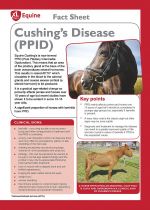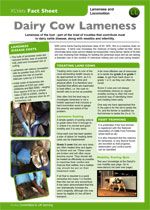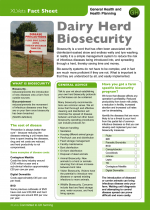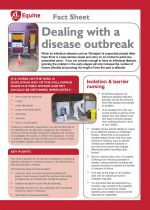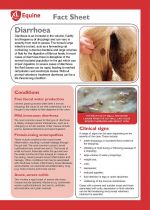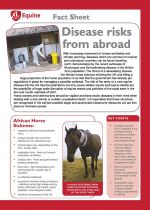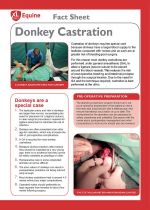Factsheets -
Below are Word and PDF files of our Factsheets. You will need Adobe Reader to view the PDF files - if you need to download Adobe Reader please click here.
Please note: some of these factsheets are several pages long and are large files, so please be patient when downloading!
Cushing's Syndrome
Pets with this condition produce excessive amounts
of hormones, especially cortisol, from the adrenal
glands. It is usually the result of a tumour (most
commonly benign) either in the pituitary gland at
the base of the brain or in the adrenal glands. The
adrenal glands are found in the abdomen close to the
kidneys.
Cushings
Equine Cushing’s is now termed PPID (Pars Pituitary Intermedia Dysfunction). This means that an area of the pituitary gland at the base of the brain overproduces several hormones. This results in raised ACTH1 which circulates in the blood to the adrenal glands and causes excess cortisol (a steroid hormone) to be produced.
It is a gradual age-related change so primarily affects ponies and horses over 15 years of age but recent studies have shown it to be evident in some 10-15 year olds.
A significant proportion of horses with laminitis have PPID.
Dealing with a disease outbreak
When an infectious disease such as 'Strangles' is suspected; people often
hope there is a less serious cause and carry on as normal to avoid any
associated panic. If you are unlucky enough to have an infectious disease,
ignoring the problem in the early stages will only increase the number of
horses affected and prolong the length of time the yard is affected.
Dental Care for the Dog and Cat
Dental disease is one of the most common problems
in cats and dogs. It can be the cause of bad breath,
bleeding gums and chronic pain but can also be a
source of infection which can spread to other parts of
the body including kidneys, liver and the heart.
Diabetes in Cats and Dogs
Diabetes is a problem that can affect both dogs
and cats. It is a condition where there is a higher
than normal level of glucose (sugar) in the
blood and urine. This leaflet will explain how the
disease can be identified and what can be done to
manage it.
Diarrhoea
Diarrhoea is an increase in the volume, fluidity and frequency of droppings and can vary in severity from mild to severe. The horse’s large intestine (colon), acts as a fermenting vat containing numerous bacteria and large volumes of fluid for the digestion of fibrous feeds. In most cases of diarrhoea there is disruption of the normal bacterial population in the gut which can impair digestion. In severe cases of diarrhoea the fluid losses can be rapid, leading to marked dehydration and electrolyte losses. Without prompt veterinary treatment diarrhoea can be a life threatening condition.
Disease risks from abroad
With increasing movement of horses worldwide and climate warming, diseases which are common in tropical and subtropical countries can be found travelling north; demonstrated by the recent outbreaks of Bluetongue and Schmallenberg disease in the British farm population. The threat of a devastating disease like African horse sickness entering the UK and killing a large proportion of the horse population is so real that the government has already put regulations in place for managing a possible outbreak. The risk of the entry of a new equine disease into the UK has the potential to not only cause welfare issues and equine deaths but the possibility of large scale disruption of equine events and activities of the scale seen in the foot and mouth outbreak of 2001.
Horse owners and veterinarians should be vigilant and keep exotic diseases in their mind when dealing with a sick animal or sudden unexplained death. It is imperative that these situations are recognised in the earliest possible stage and appropriate biosecurity measures are put into place to minimise spread.
Donkey Castration
Castration of donkeys requires special care because donkeys have a larger blood supply to the testicles compared with horses and as such are at greater risk of bleeding post-surgery.
For this reason most donkey castrations are performed under general anaesthesia (GA), to allow a ligature (secure suture) to be placed around the blood vessels. This reduces the risk of post-operative bleeding and intestinal prolapse through the surgical incision. Due to the need for GA and the technique required, castration is best performed at the clinic.
